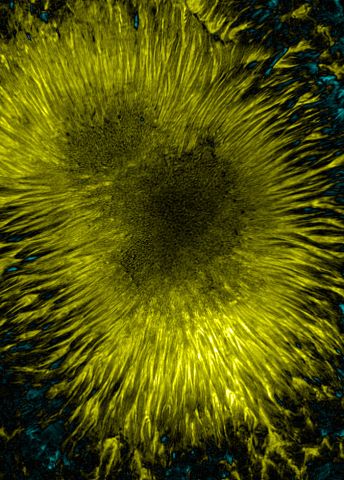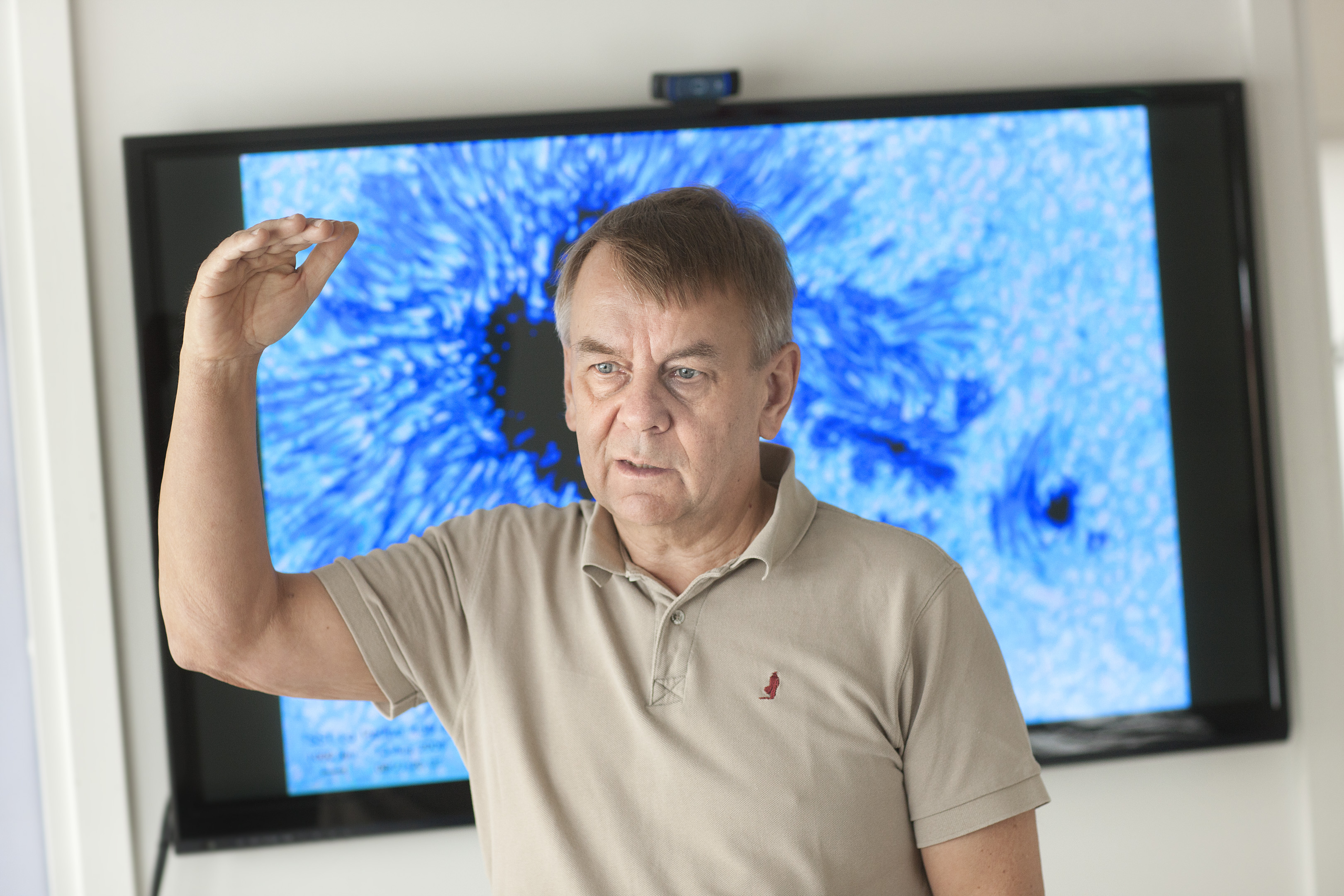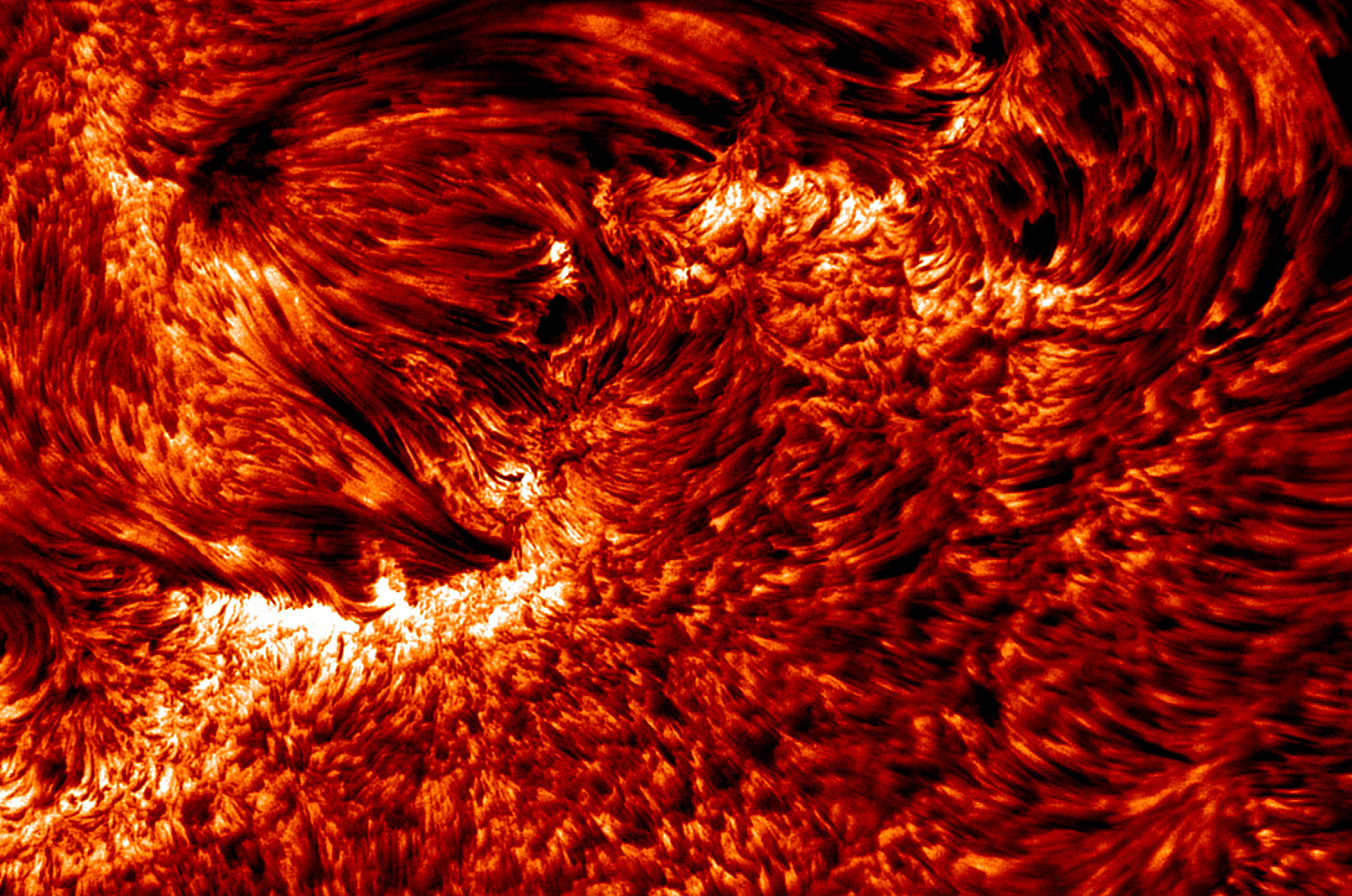
Project Grants 2012
Dynamics of the solar chromosphere
Principal investigator:
Göran Scharmer, Professor of Astronomy at Stockholm University and the Royal Swedish Academy of Sciences
Co-investigator:
Mats Carlsson
Institutions:
Stockholm University, Royal Swedish Academy of Sciences, University of Oslo
Grant in SEK:
SEK 26.4 million over five years
The solar tower that holds up the telescope is located on a narrow mountain crest above the clouds. On one side, the mountain dives down into a two million year-old volcanic crater. On the other side of the crest lies the sea, the Atlantic, 2,400 meters below. An unbroken sea stretches the whole way to the horizon.
The fact that the Swedish solar telescope (SST) is placed high atop La Palma, the Canary Island that is located furthest northwest, is no happenstance. It is a carefully chosen location.
“The wind often blows from the northeast, this is the trade wind. It blows thousands of miles over the sea without hitting anything. Therefore, the telescope is exposed to a nice, clean and laminar air flow. There are nearly no turbulence or temperature variations in the wind,” says Göran Scharmer, Professor of Astronomy at Stockholm University and the Royal Swedish Academy of Sciences.
This means that the solar radiation that enters the lens of the telescope has been disturbed relatively little on its way through the Earth's atmosphere. The opportunities of making observations are therefore the best possible.
Unknown mechanism adds energy to the sun's atmosphere
The high quality of the Canarias skies for astronomy is necessary now that the researchers will take on a new challenge: to try to understand the solar chromosphere. This is located between the visible surface, the photosphere, and the outer corona. A few thousand kilometers up from the surface of the sun, in the chromosphere itself, the temperature suddenly increases dramatically. Researchers discovered this already in the mid-20th century but the phenomenon has not yet found an explanation. On the surface of the sun, the temperature is around 6,000 degrees and further away from the surface, the temperature should actually be cooler. But suddenly it instead becomes one million degrees hot.
“So there must be some mechanism that adds energy to the chromosphere,” says Göran Scharmer.

He has now received financing from the Knut and Alice Wallenberg Foundation to be able to explain the temperature increase together with Mats Carlsson, active at the University of Oslo.
“The chromosphere is much more difficult to understand than the deeper layers of the sun. It is also harder to observe, so it will be a challenge to gather data,” says Göran Scharmer.
To be able to study the chromosphere, they will equip the SST with a new filter that removes all radiation except that with a wavelength in a narrow range around 393 and 396 nanometers in the violet part of visible light.
“The new filter will become 13 times narrower than our current filter. With it, we will be able to begin seeing the individual layers in the chromosphere,” says Göran Scharmer.
Powerful magnetic fields generate the extreme heat
The reason that it is so warm in the chromosphere is most likely related to the sun's magnetic field. Sunspots are the clearest evidence that powerful magnetic fields emerge from within the solar interior for reasons that researchers not yet can explain. The gas in the magnetic fields is less dense than the surrounding gas. The magnetic field therefore floats up to the solar surface like a cork in water. The reason the sunspots are dark is because a large part of the convective energy flow from within the sun is blocked by the magnetic field.
The number of spots on the surface of the sun is normally very small. But many small areas with strong magnetic fields are also formed in calmer parts of the sun and they spread out in the thinner chromosphere. There, they create strong flows. The researchers believe that the gas movements in the deeper layers of the sun pump up so much energy in the magnetic fields that they ultimately become unstable and collapse into more stable magnetic field configurations. At the same time, large amounts of energy are released that heat up the gas of the chromosphere. In the outer layer, what borders on the corona, the gas is so hot that it emits primarily UV light.

Cooperation with the IRIS space telescope
To be able to obtain a complete picture of the processes in the sun's chromosphere, Göran Scharmer and Mats Carlsson will cooperate with researchers in California. They will take advantage of a new space-born telescope, IRIS, which will measure extreme UV radiation from the corona.
“The IRIS team will select a part of the solar surface that we will observe. They give us the coordinates for longitude and latitude one day in advance. Then we jointly determine what kind of measurements we should make,” says Göran Scharmer.
By synchronizing the observations, the scientists can study various layers of the sun simultaneously. IRIS was sent up in the summer 2013 and the plan is that SST's new filter system will be installed in 2015. The researchers can then begin gathering data in earnest. Hopefully, they will then gain a better understanding of the sun that daily feeds all life on Earth, and warms up all of the tourists who are enjoying La Palma's neighboring islands.
Text Ann Fernholm
Translation Semantix
Photo Magnus Bergström



